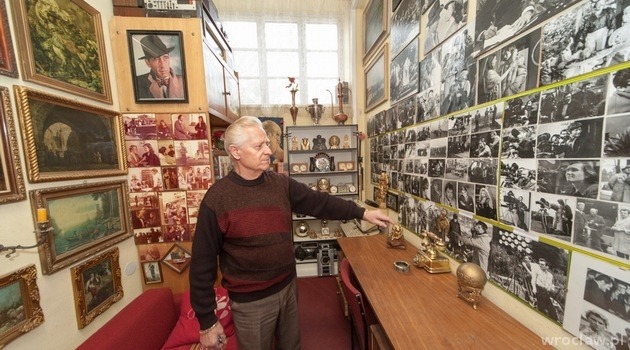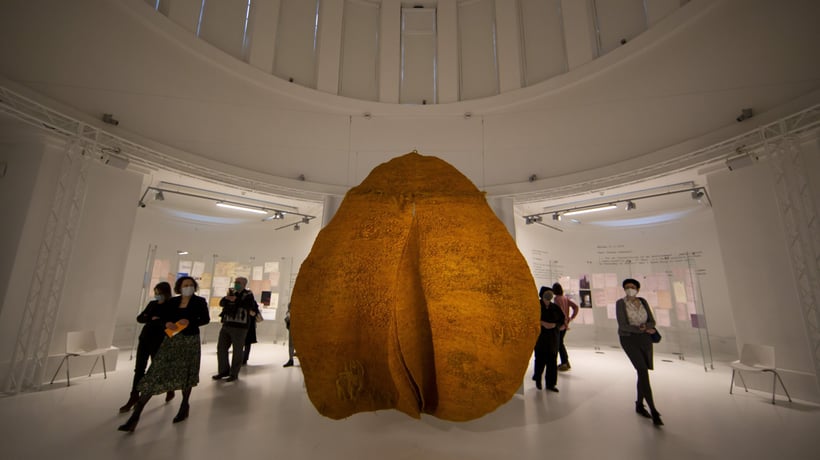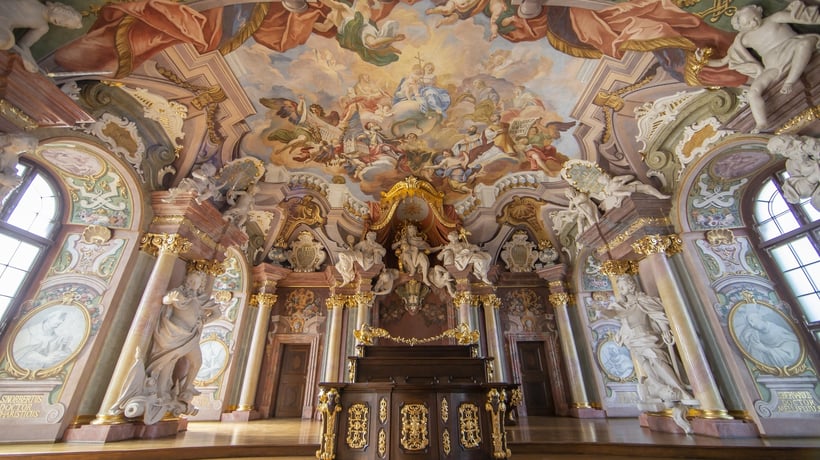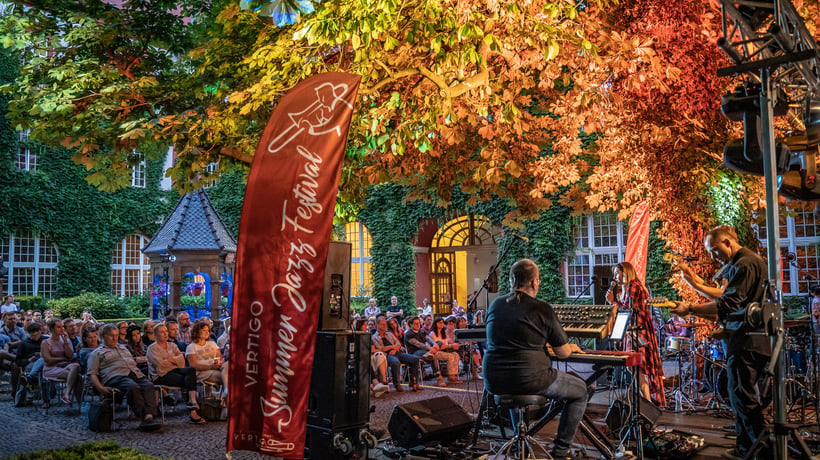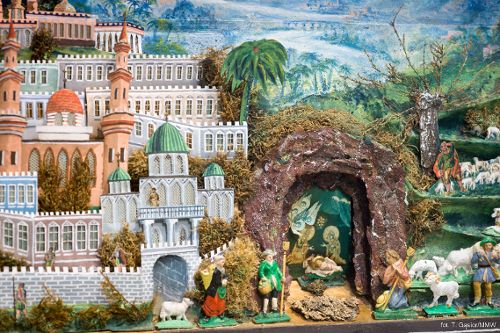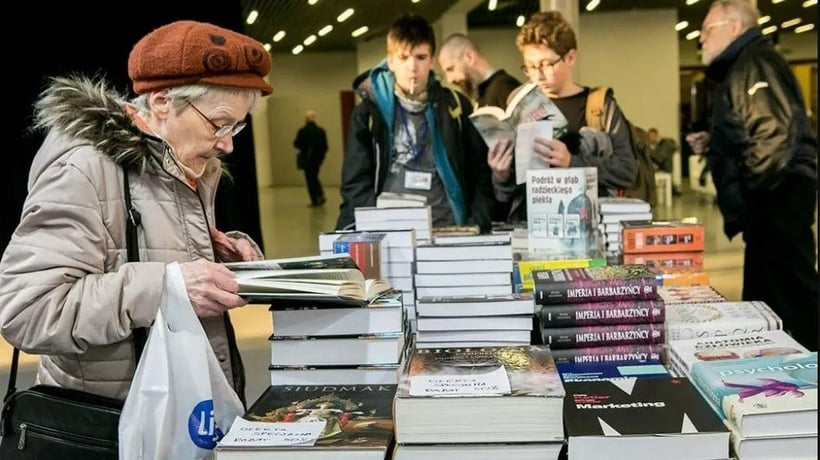Initially there were plans for three films to be made in Wroclaw per year, but the number grew quickly and four years later nine films were made in the atelier. The end of the 1950' and the entire 1960's turned out to be a golden age for the film studio due to the expansion of the object but primarily due to the names of directors who decided to work here. Andrzej Wajda made Popiół i diament (Ashes and Diamonds), Wojciech Jerzy Has - Rękopis znaleziony w Saragossie (The Saragossa Manuscript) and Lalka (The Doll), Roman Polański - scenes for Nóż w wodzie (Knife in the water), Stanisław Lenartowicz - a comedy Giuseppe w Warszawie (Giuseppe in Warsaw) and Konrad Nałęcki - a cult TV series Czterej pancerni i pies (Four tank-men and a dog).
Golden trolley and magic mirror - let's go in
Those great films and outstanding directors have left traces in the film studio which we discover immediately after entering the main hall. On the left-hand side, what stands out besides the wall with posters for films made in Wroclaw is a splendid Italian operator's trolley from 1976. Its unusual golden paint makes it unique in Poland. Now an exhibit only, it was once used regularly at the set. On the right-hand side of the hall there is a mirror which is several metres long and occupies almost the entire wall. In 1964 it was used for special effects in Rękopis znaleziony w Saragossie (The Saragossa Manuscript) by Wojciech Jerzy Has. - It "acted" in the scene in which Zbigniew Cybulski passes through a horseshoe arch, first sees the mirror and his future life in it and then passes through the mirror, says Maria Duffek, a set and costume designer from the Feature Film Studio (Wytwórnia Filmów Fabularnych - WFF). The large and apparently magic mirror was used for scenes shot at the studio in Wroclaw and was later transported to the Polish Jura for outdoor scenes.
Zbyszek Cybulski Studio "A"
It is an impressive sound stage. In 1986 a swimming pool was built under the floor and the half-naked Katarzyna Figura comes out of it in a final scene of Pociąg do Hollywood (Train to Hollywood) by Radosław Piwowarski. Now the place is more refined: it houses costumes, operator's trolleys (see photos) and a Czech camera from the 1950's - all that prepared for a special anniversary exhibition which will be opened in March.
Stanisław Kolenda, one of the oldest and most experienced employees of the studio, shows us trolleys for operators. Most of them were made at the studio in the 1960's and 1970's. - They still work, you can go ahead and move them around and make music videos at premises with little space, points out Stanisław Kolenda, who has taken care of the equipment for years preventing its damage, especially because it would be difficult to shoot any scenes without it.
Cleavage of Beata Tyszkiewicz - a glance at beautiful costumes
Fashion, strictly speaking, is now dominating studio "A" which was named after Zbyszek Cybulski several weeks ago. Not only had the actor often visited the studio but he also lived in the guest rooms when scenes were shot. In the large hall we shall find a picture of Cleopatra with a snake, which Zbyszek was "painting" ineptly in the comedy Giuseppe w Warszawie (Giuseppe in Warsaw) by Stanisław Lenartowicz. There are more souvenirs related to the legend of Polish cinema here such as the two costumes from Rękopis znaleziony w Saragossie (The Saragossa Manuscript), in which he acted as Alfons van Worden, captain in the Walloon guard.
We can see the costumes due to a special restoration project initiated at the studio by Maria Duffek. A team of six specialists is working to revive the glamour the costumes used to have. - We are very happy that at least some costumes have been preserved, because in the computer age we really forget that they are a genuine masterpiece which specialists treasure all over the world, points out Barbara Drozdowska, a costume and set designer who works in the project.
How to make a hanged man, i.e. the Foley studio
- It is a special soundproof room for synchronous effects, explains Szymon Straburzyński, a sound specialist. Films get here for recording generally all sounds besides dialogues. In one room the record producer plays the film on a laptop computer and in another room the Foley artist watches the action and has to provide for example footsteps, rustling grass (wonderfully imitated by old tape), the dangling of a hanged person (with a device to drive a certain type of screws), a running horse (coconut halves being perfect for this purpose), the shutting of a car door (closing the fridge door gave an illusion of closing a Mercedes) or a door bell (see photo for a selection of door bells). A useful historical object is a Nagra tape recorder designed by a Polish engineer Stefan Kudelski; it has been frequently used by all film and TV studios all over the world. - Old sound designers still keep it in their cars beside a digital recorder, just in case as it works even at minus forty degrees Celsius, explains Straburzyński. Let's go on.
Screening room designed by the Wroclaw University of Technology
In the 1970's engineers from the university took care of the acoustics of the room where materials were shown and small-group discussions were held. -They checked films for technical errors and verified the work of the operator and actors. From the screening room we go on to a small room (with a possibility to watch the screen) where voice-overs are recorded.
Film studio in blue
When in 2011 the Feature Film Studio was converted into the Audiovisual Technology Center (Centrum Technologii Audiowizualnych) a new studio was built as well (established under the supervision of Zbigniew Rybczyński): it is unique in Poland at present. In the past when you wanted to shoot scenes in the atelier you needed to arrange the setting, then actors came and shots were taken. All you need now is the bluescreen - an image processing technology. In the huge studio there is a special HD camera and two sets: smaller and larger (photo), rotary. - The rotary movement of the set is connected with the movement of the camera boom in the space, tells us Jakub Machałek. - The system combines a living actor with generated 3D graphics and an added miniature, he explains. There is no need for the classical setting here. - We have conducted tests with miniatures and we have shots where an actor passes through the door and you cannot tell that in fact we used an object which was less than a metre high, stresses Jakub Machałek. Now they are working at the studio on a method for lighting actors at the set so as to generate shadows or new scenographic elements by means of trick light. No spectacular film has been made yet. - We are developing suggestions for possible uses of this system, says Łukasz Mackiewicz, graphic artist. The studio is changing because the way films are produced has changed. In the edifice at ul. Wystawowa the past meets the future. The common denominator is still the film.
Magdalena Talik


